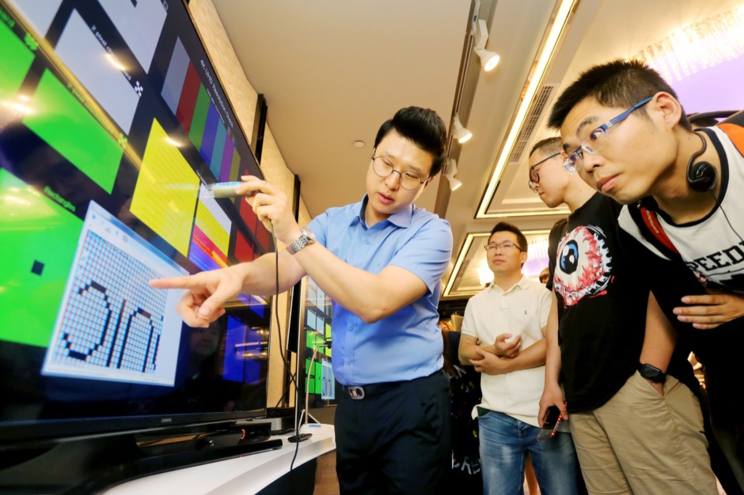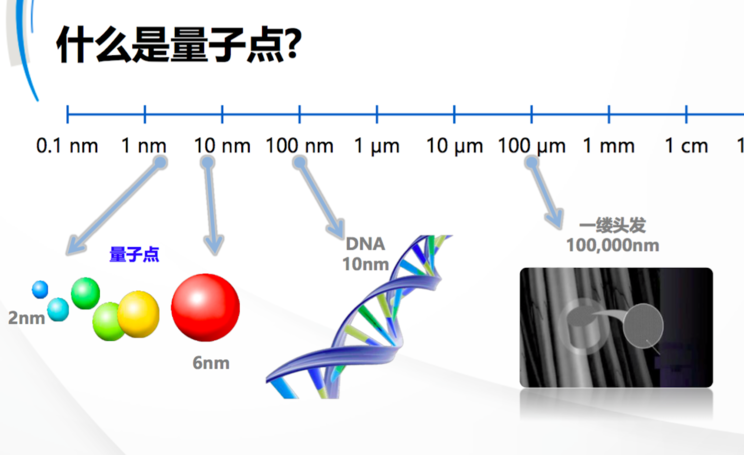
Since Sharp was first introduced at the beginning of the century, LCD TVs have experienced more than a decade of development. Can be divided into two major categories of products, one is the LCD TV, which is often said that LCD TVs, the vast majority of the current market, TVs are LCD TVs, and the other one is the much sought after OLED TV.
Subdivided, LCD TVs can be divided into LED TVs and Quantum TVs. Just as people all feel that OLED TVs will be sweeping the entire domestic color TV market this year, the concept of "quantum dots" has suddenly become hot again.
LED TV everyone should be more familiar with, it is the use of LED as a backlight LCD TV, then what is Quantum TV?
What is a quantum dot?
Quantum dots are manufactured by a certain chemical process and are only 10 to 2 nanometers in size. These quantum dots can be incorporated into transistors or films to be bundled for sale. They are adjustable and can convert short-wave light sources into light of various colors.
The emergence of quantum dot displays is most likely a revolutionary innovation, and mainstream TV makers certainly can't miss this last wave of trends. LG, Samsung, and other OEMs have launched Quantum-dot TVs on their own. In addition, quantum dot technology has also begun to expand into new markets - the future of solid-state lighting and solar energy will appear in its presence.
Professor Lee Seonghoon of the Department of Chemistry at Seoul National University introduced that quantum dots can not only accurately and clearly present rich colors without the use of other substances, but quantum dots as inorganic materials can also effectively enhance the service life of televisions.
What is the magic of quantum dots?According to an authoritative survey company DisplaySearch survey, both developed and developing countries have gradually become saturated. As a result, when the OLEDs turned out, the rumors of the death of the liquid crystals began to rise. The future of TVs went to the left of the LCD and the junction of the OLED to the right.
The second-generation SUHD QD TV recently released by Samsung is the only company in the world to introduce a cadmium-free quantum dot TV. Due to the adoption of a 10-bit quantum dot display panel, up to 1 billion colors can be represented, and the color detail expression is 64 times that of ordinary TVs. The human eye viewing experience is extremely extreme.
One of the biggest advantages of OLED TVs over LCD TVs is their fuller color performance. Quantum-dot TVs based on quantum dots have no inferior color gamut coverage to OLED TVs that are considered as future stars.
In fact, the QLEDs, OLEDs, and ULED TVs currently on the market are more named from a technical point of view. Samsung SUHD is more than a quantum dot technology. As a pioneer in quantum dot technology, Samsung has nearly 150 core patented technologies.
As a new series launched by Samsung, SUHD TV has proven its strong strength with its good market performance. According to IHS data, in 2015 alone, SUHD TV sold over one million units. In 2016, Samsung expects the SUHD product line to expand by 30%, sales will increase by 2 times, and steadily advance the growth of the high-quality TV market.
According to the latest data from Touch Display Research, the total market size of quantum dot display and lighting components in 2016 may exceed US$2 billion, and in 2025 this figure will even increase to US$10.6 billion.
Quantum-dot LED electroluminescence will be the most advantageous contender for the next-generation display technology. Quantum-dot TV is becoming a representative civilian technology in the current nanotechnology entry into consumer life. In the face of changes in the general environment, the future of television should be more in line with consumer lifestyles and the resulting unique value.
3 In 1 Charger,3 In 1 Charging Station,3 In 1 Wireless Charger,3 In 1 Apple Charging Station
wzc , https://www.dg-wzc.com
